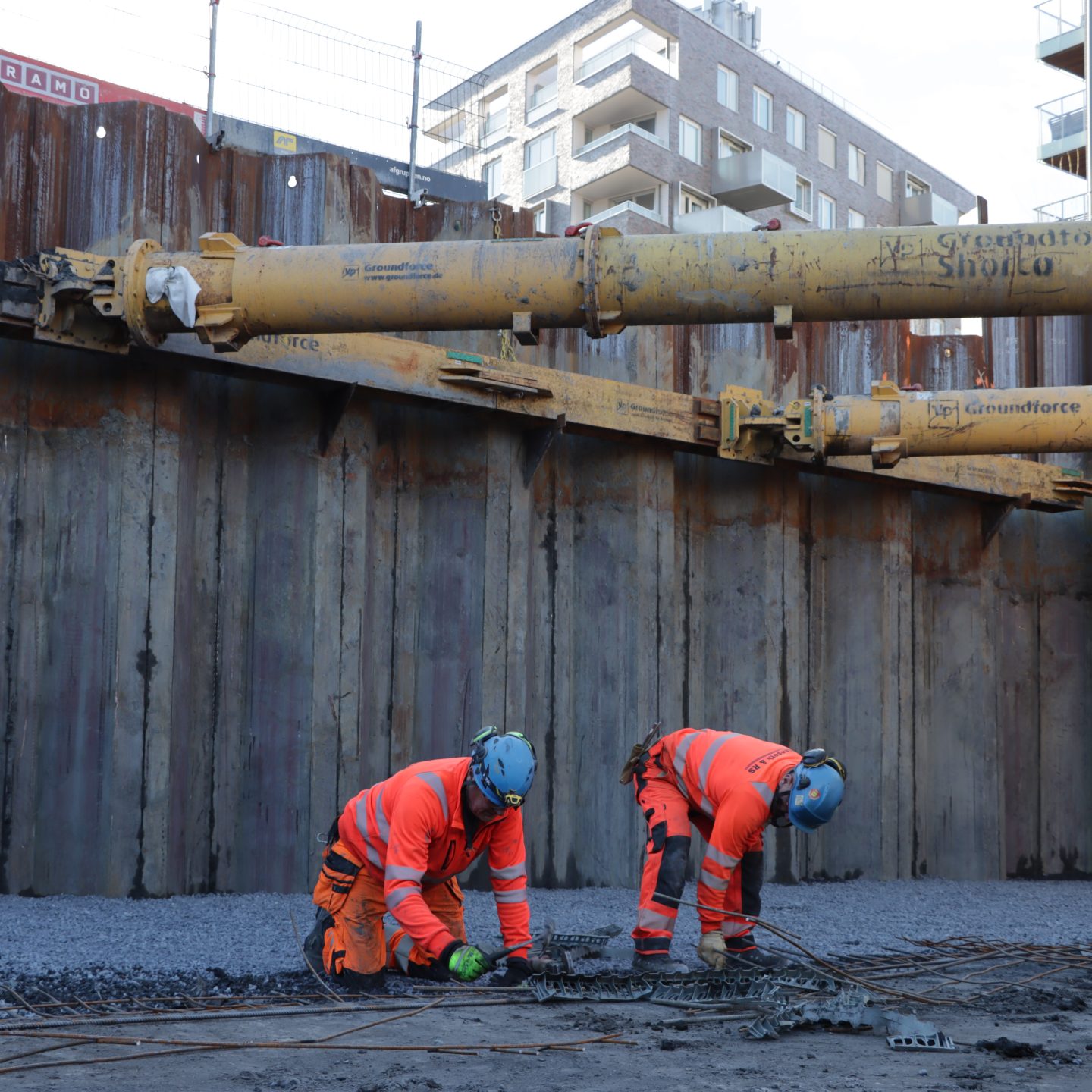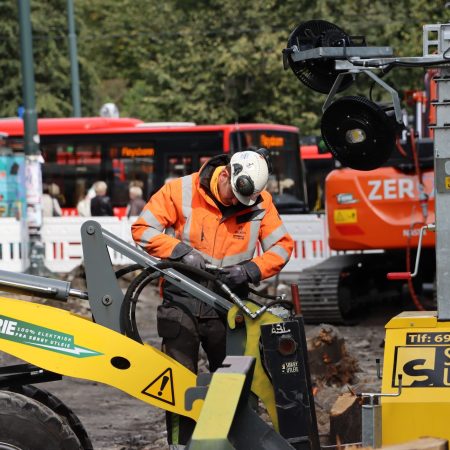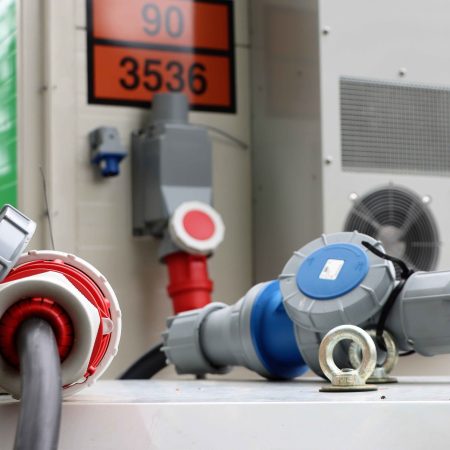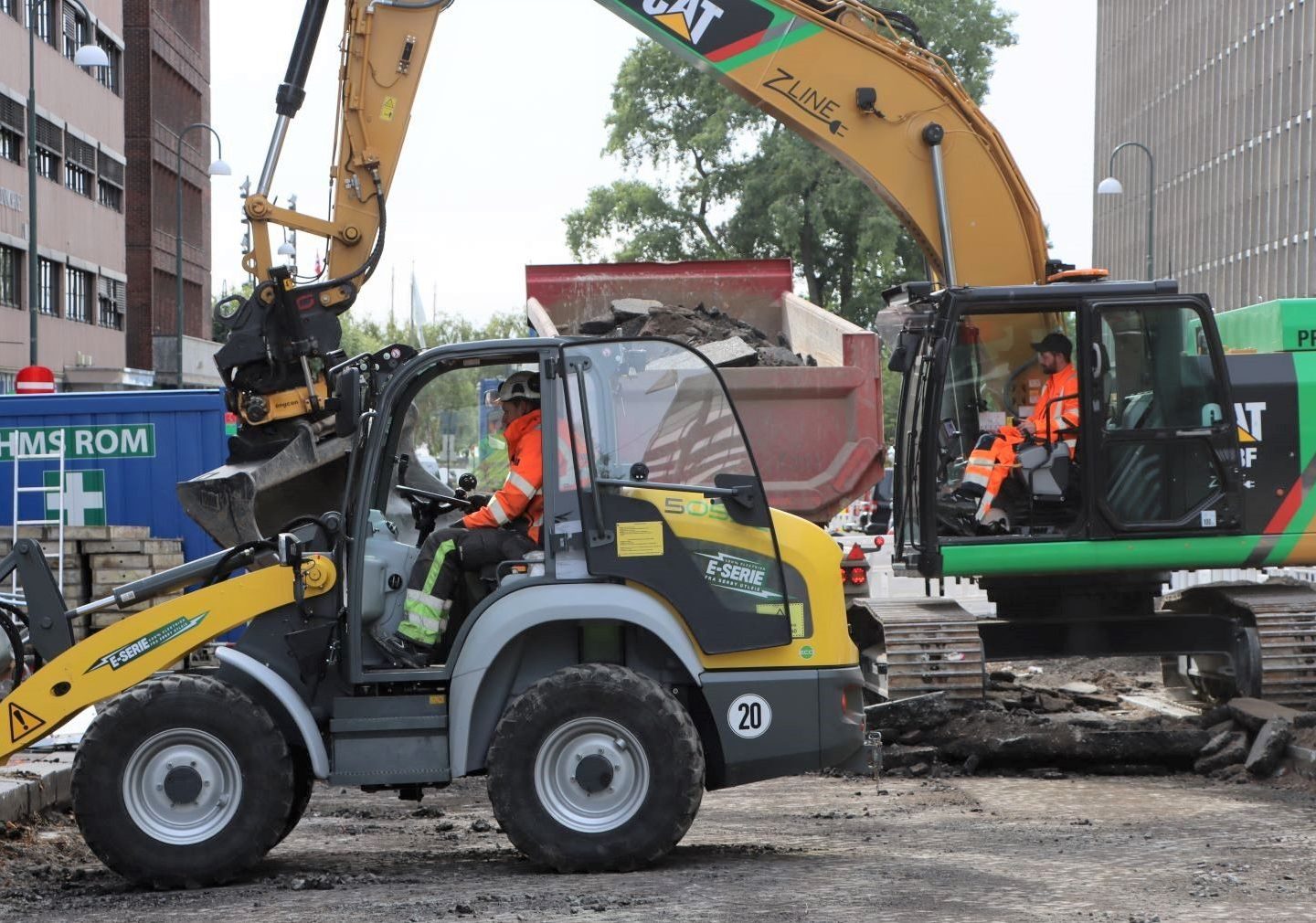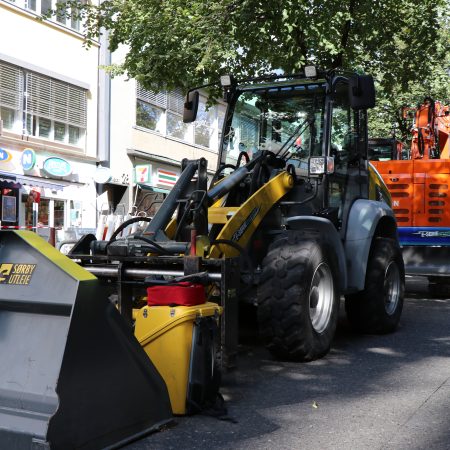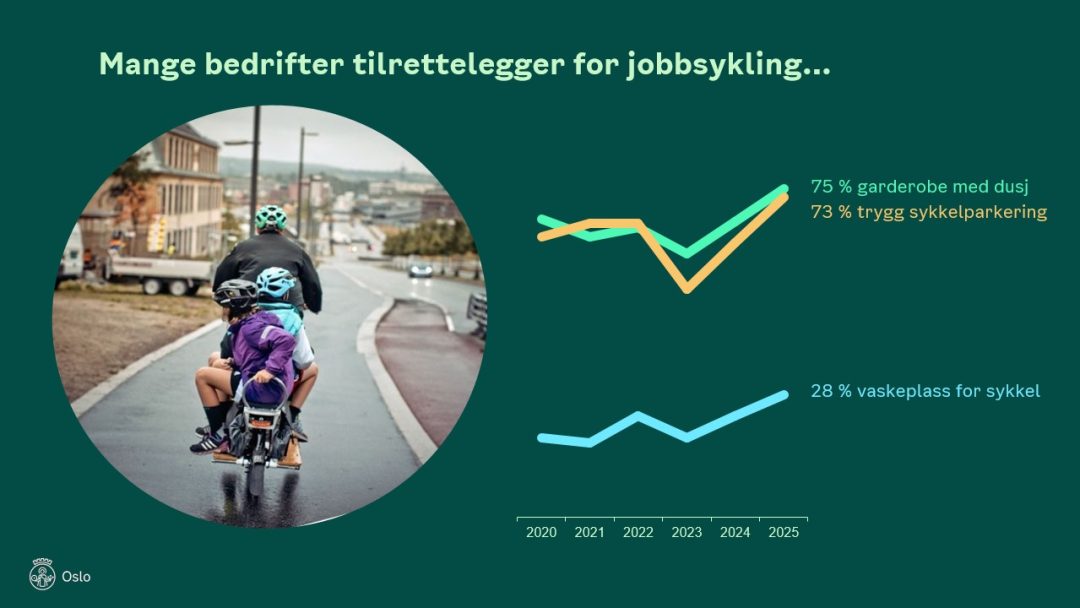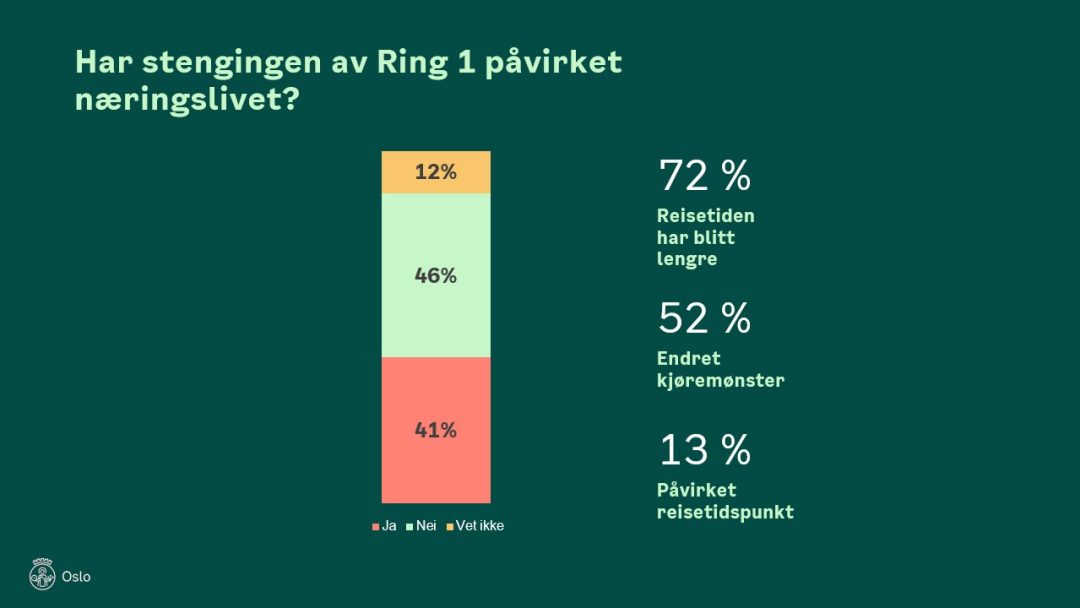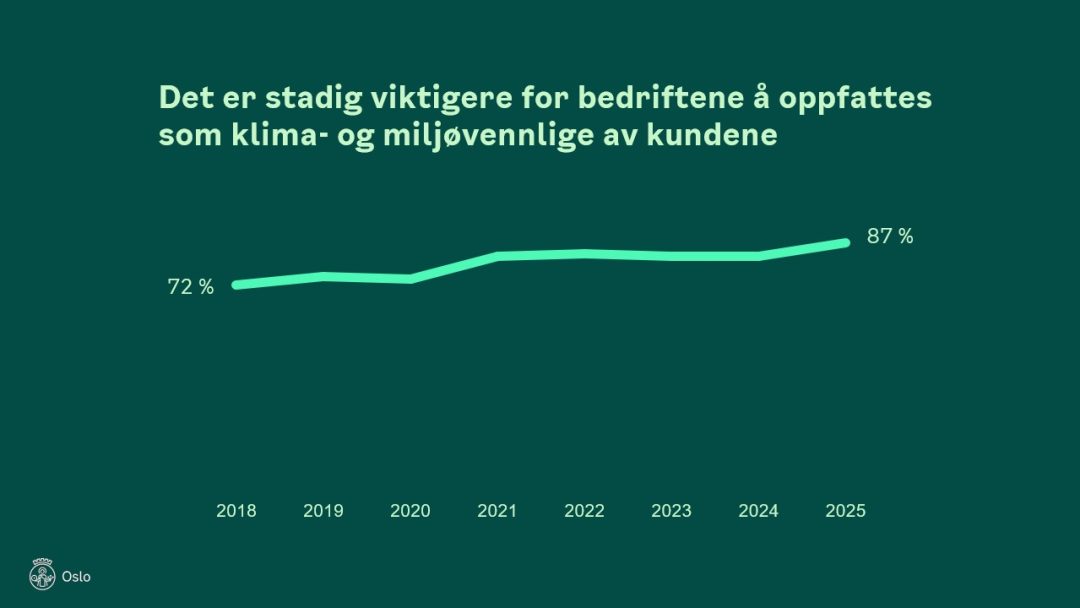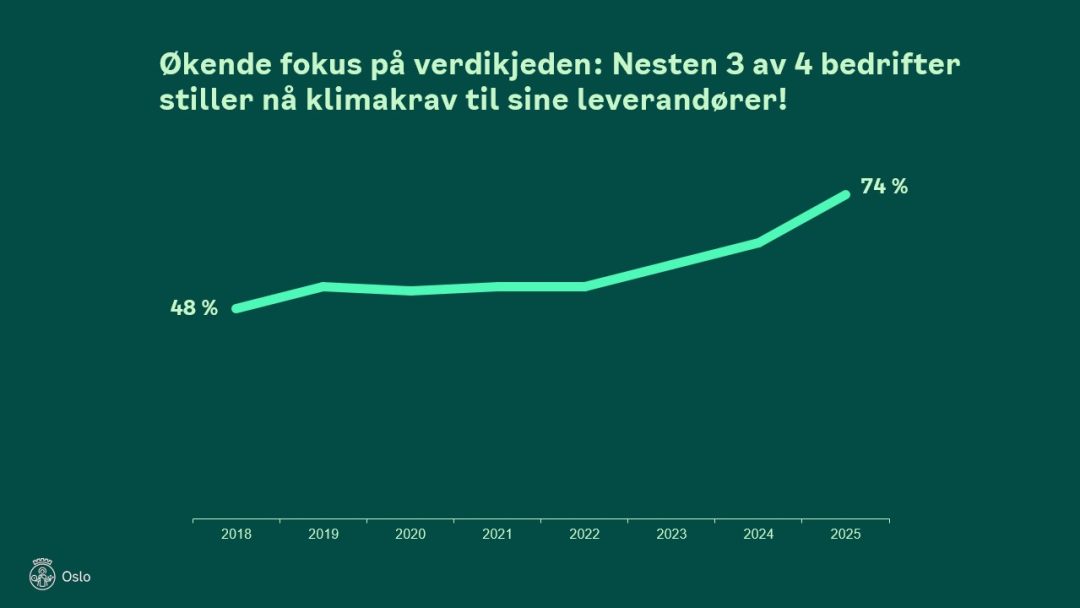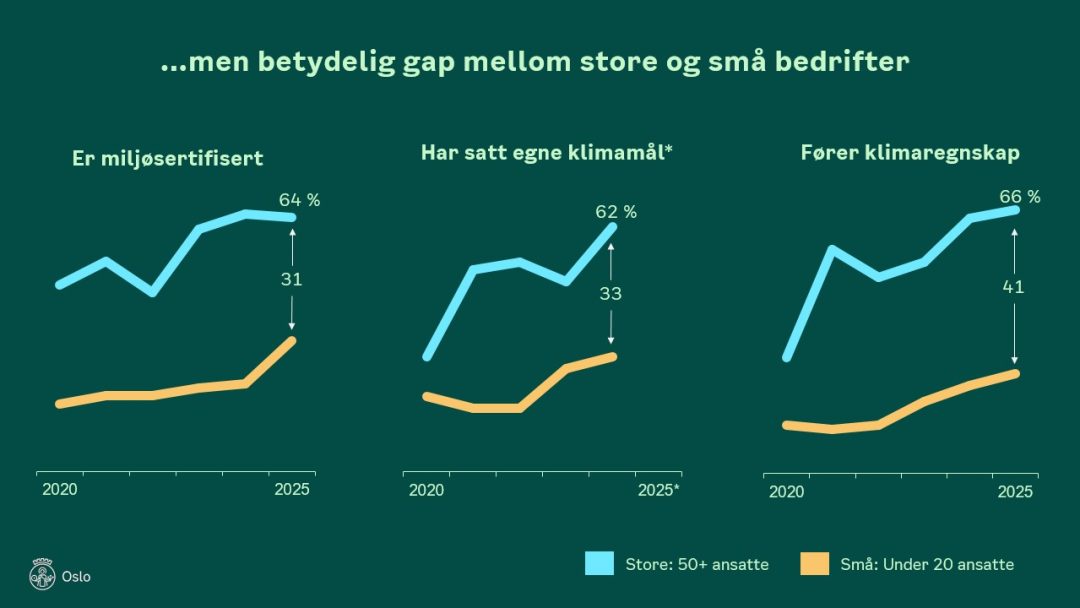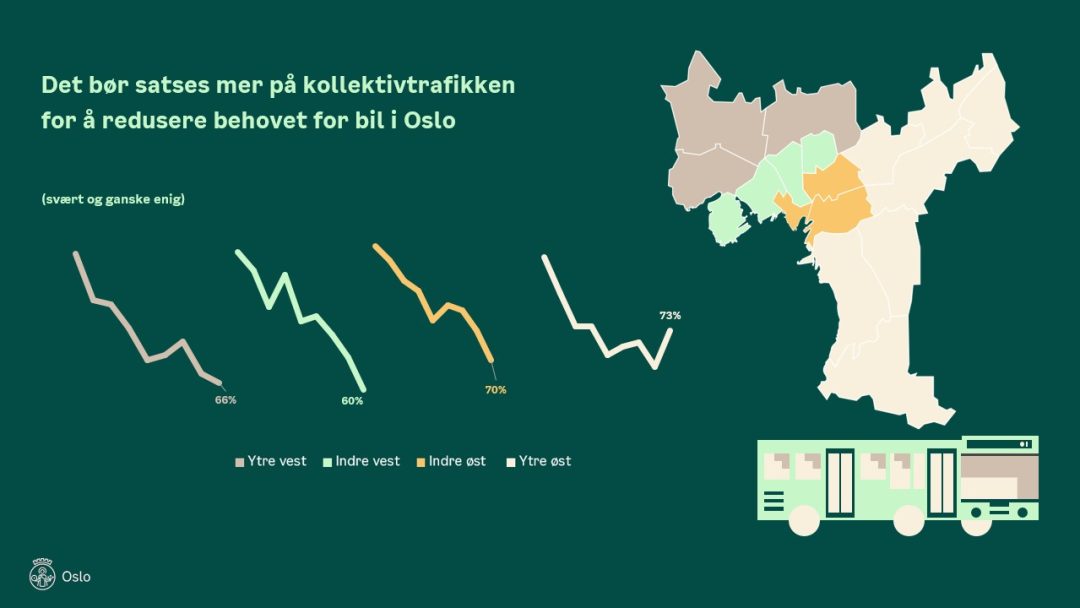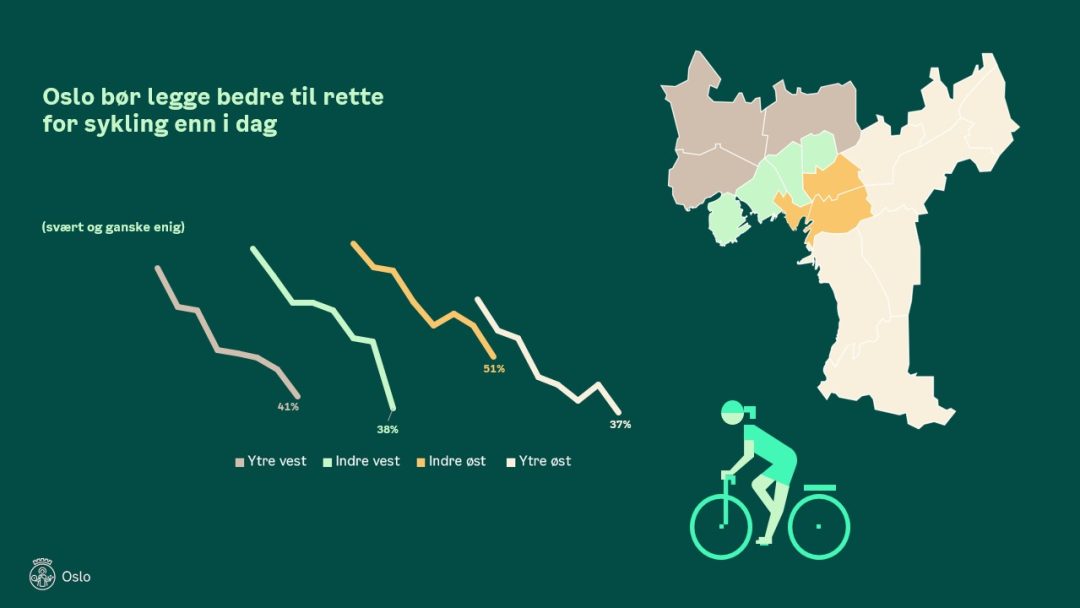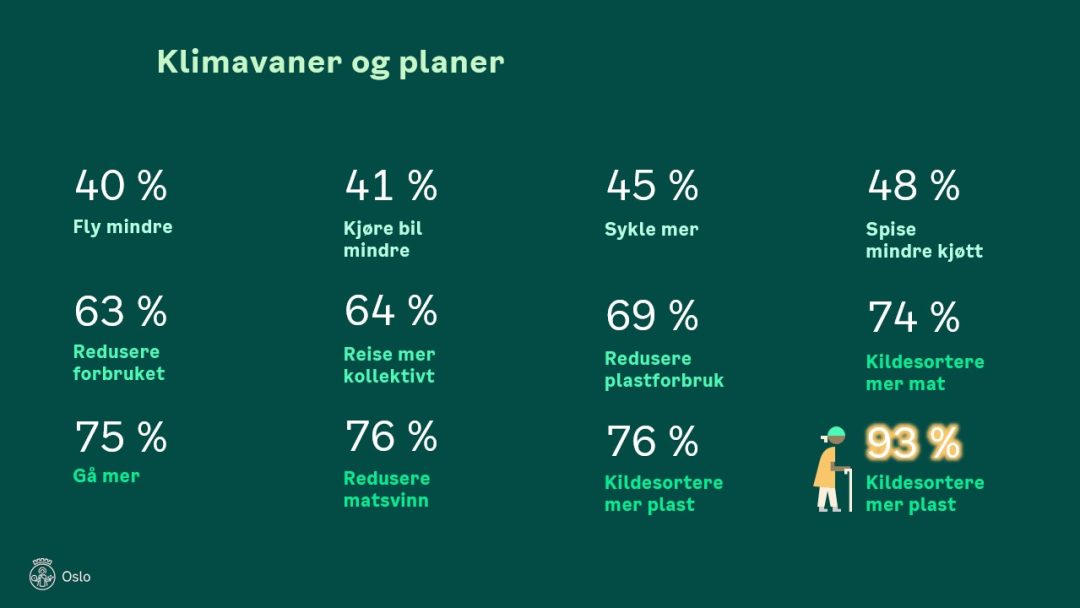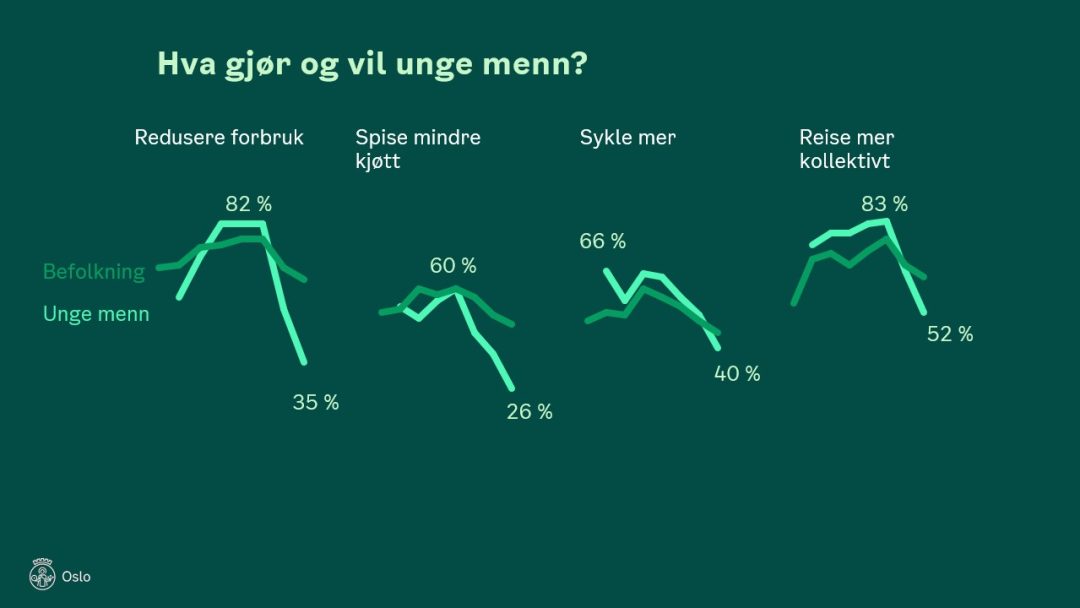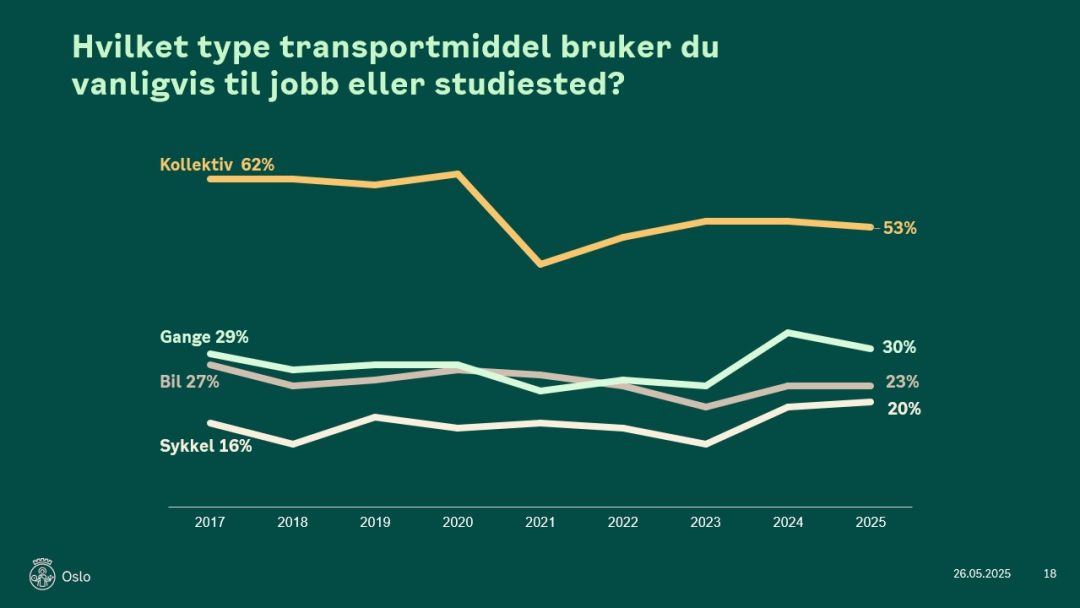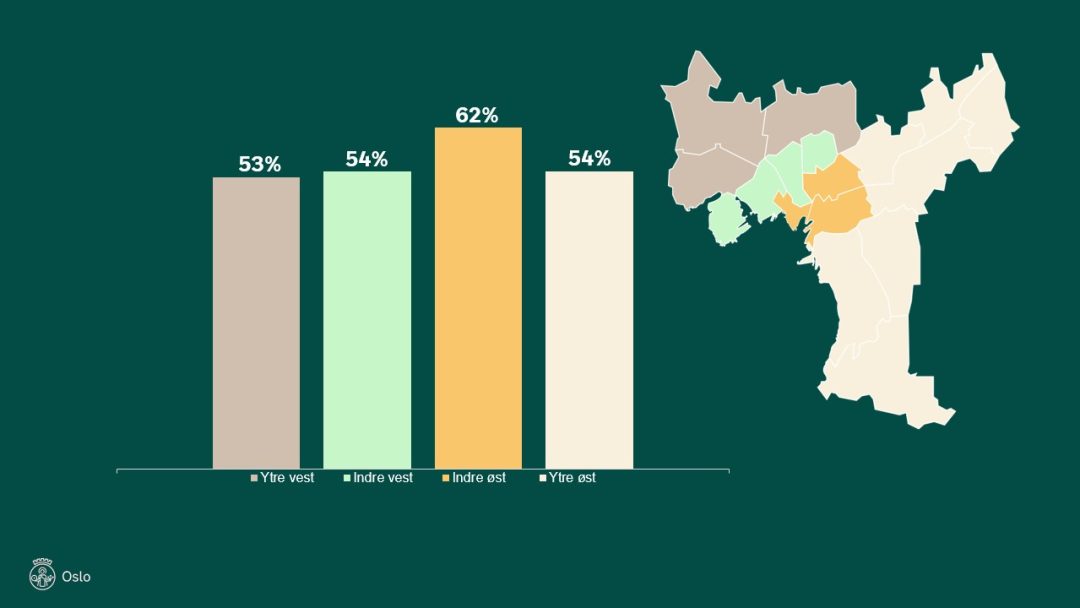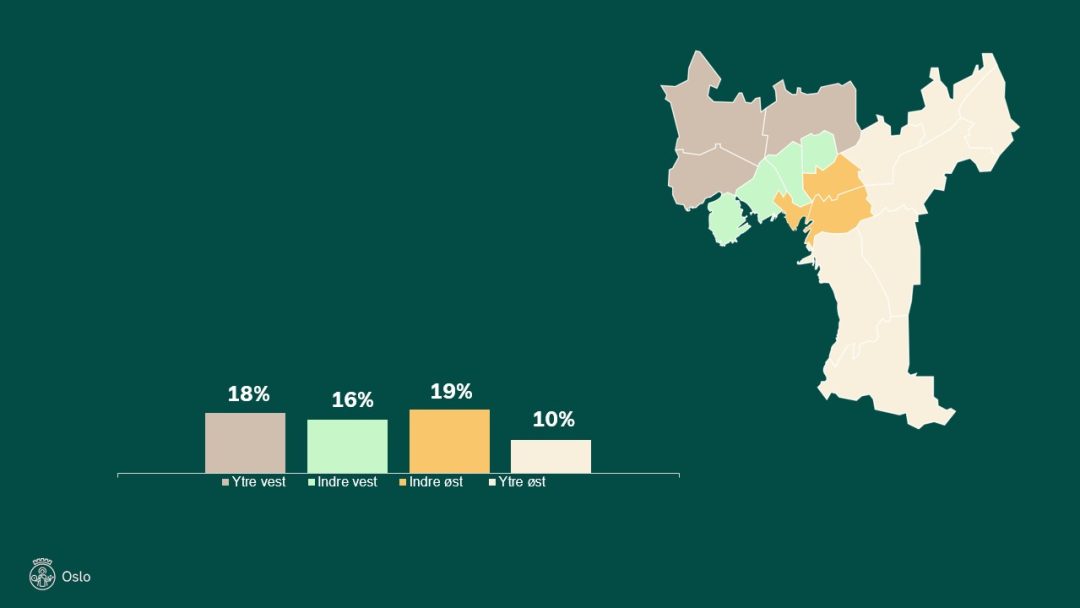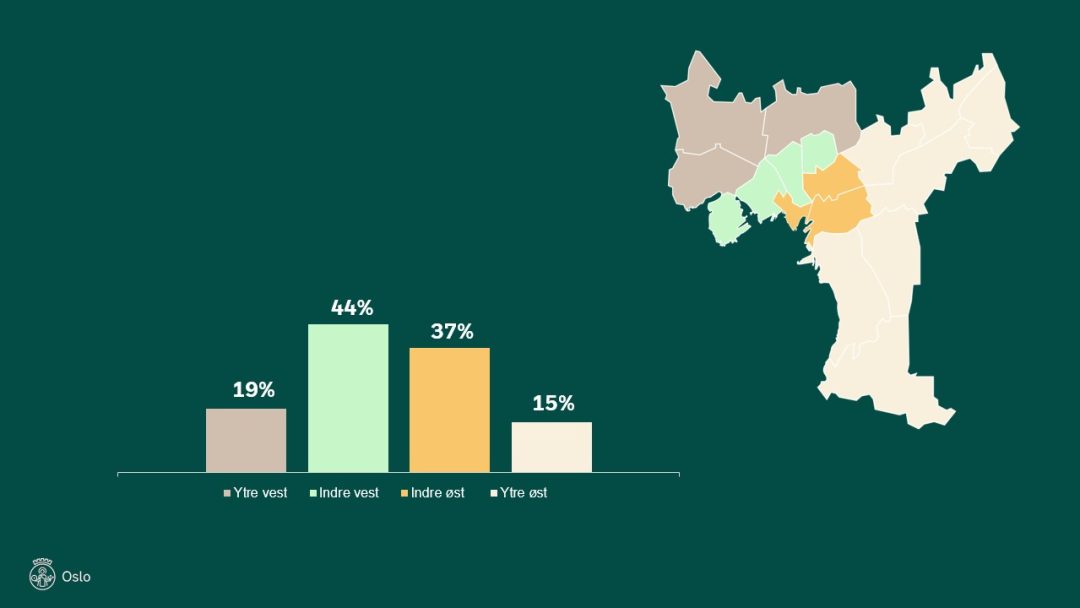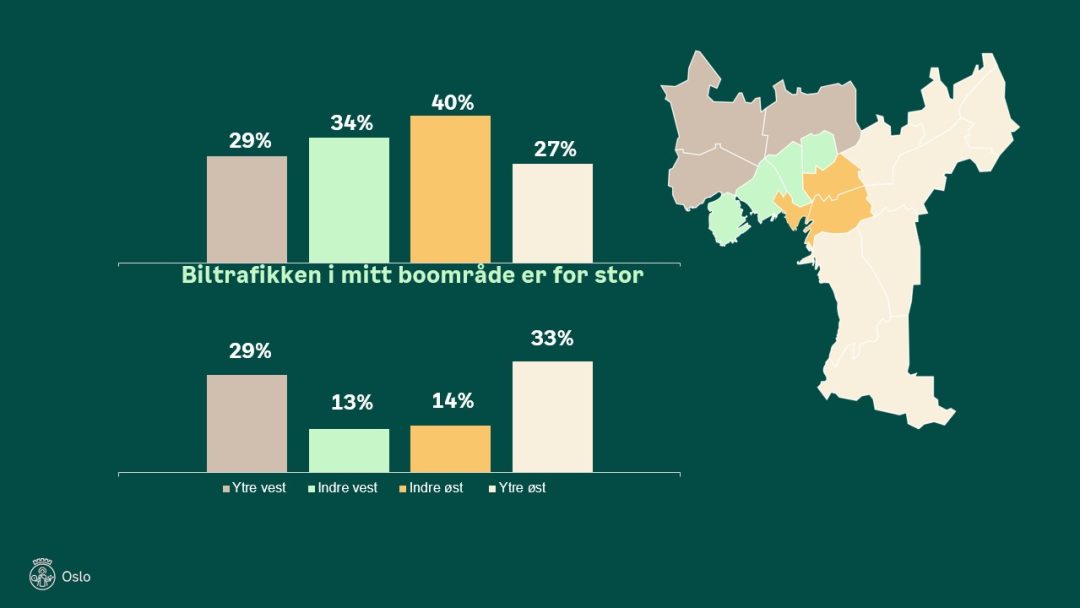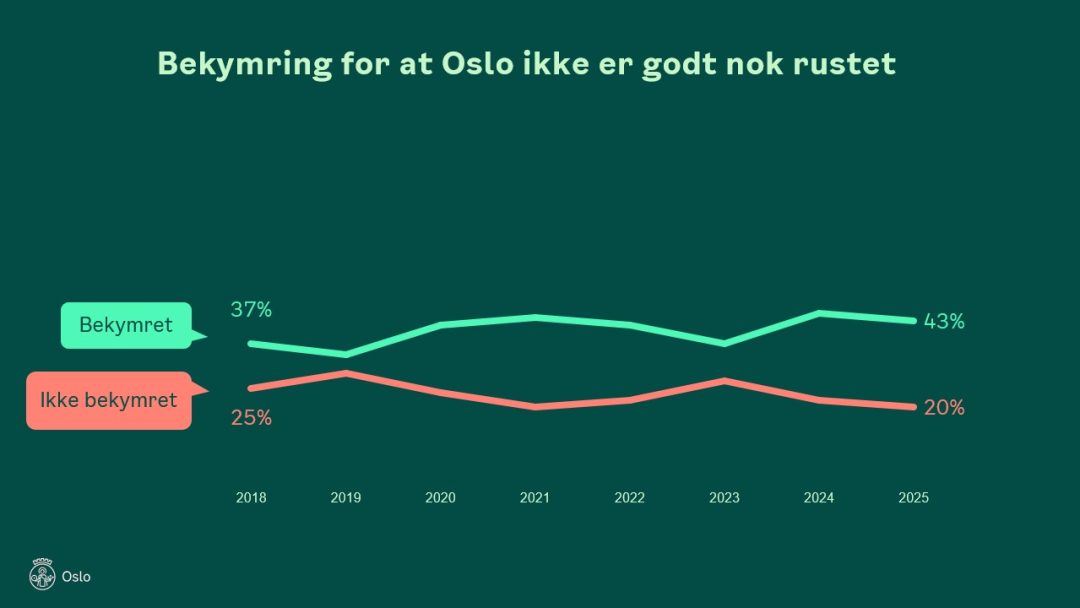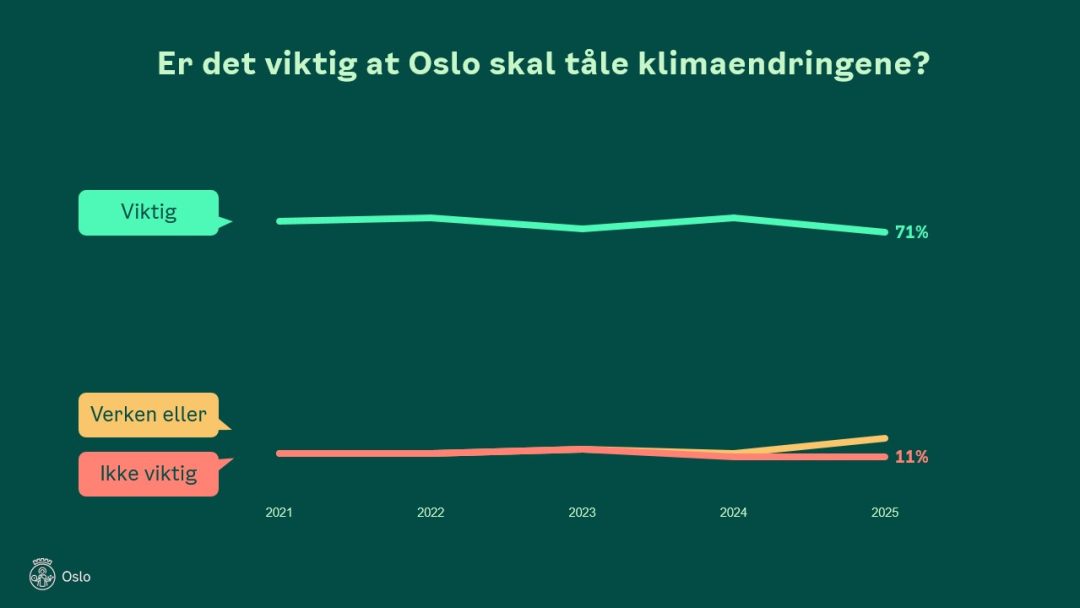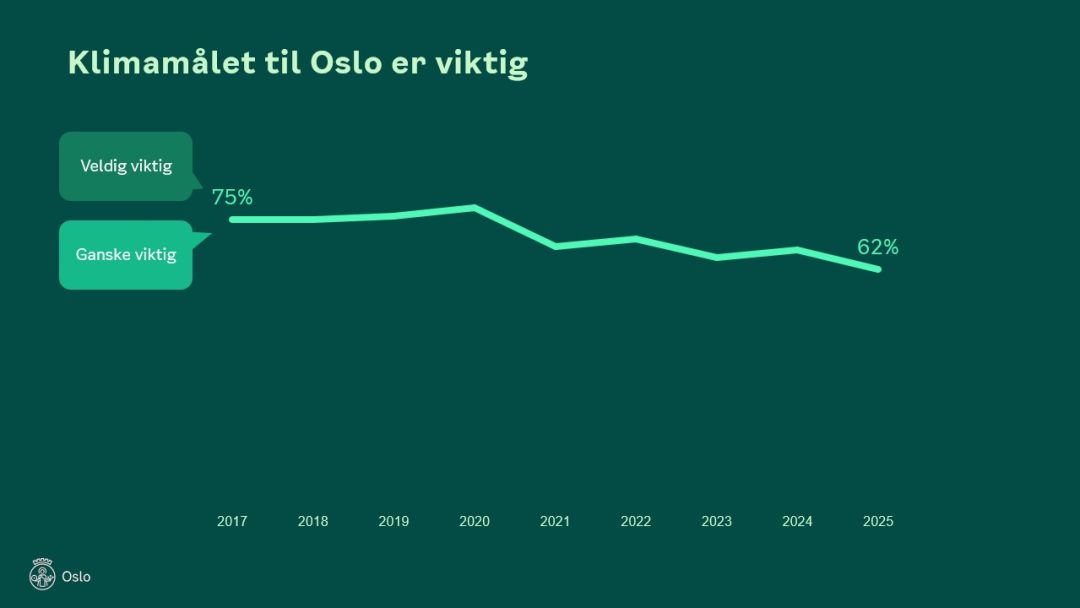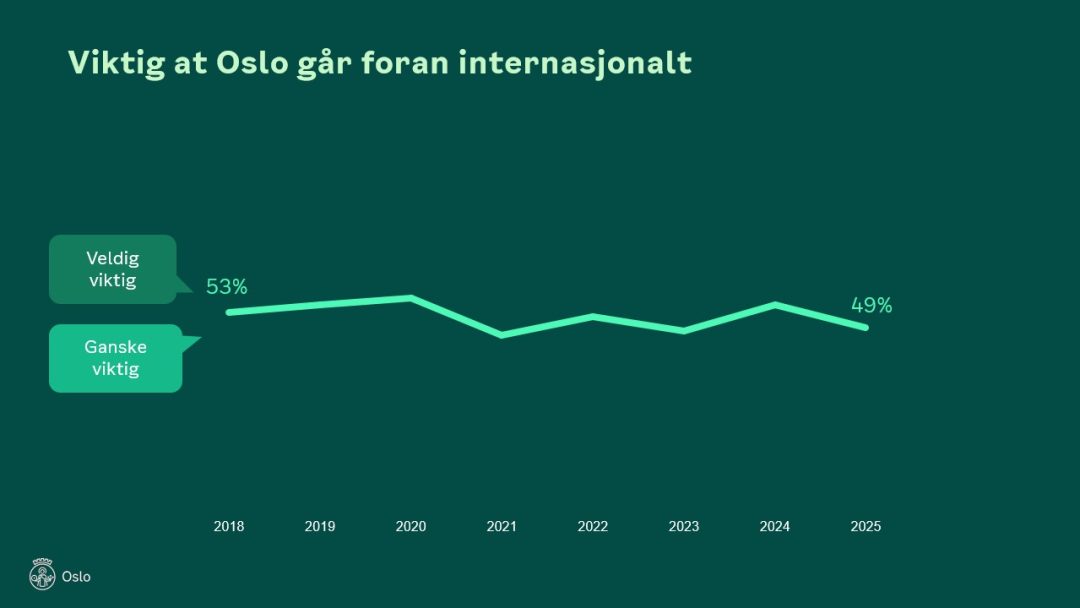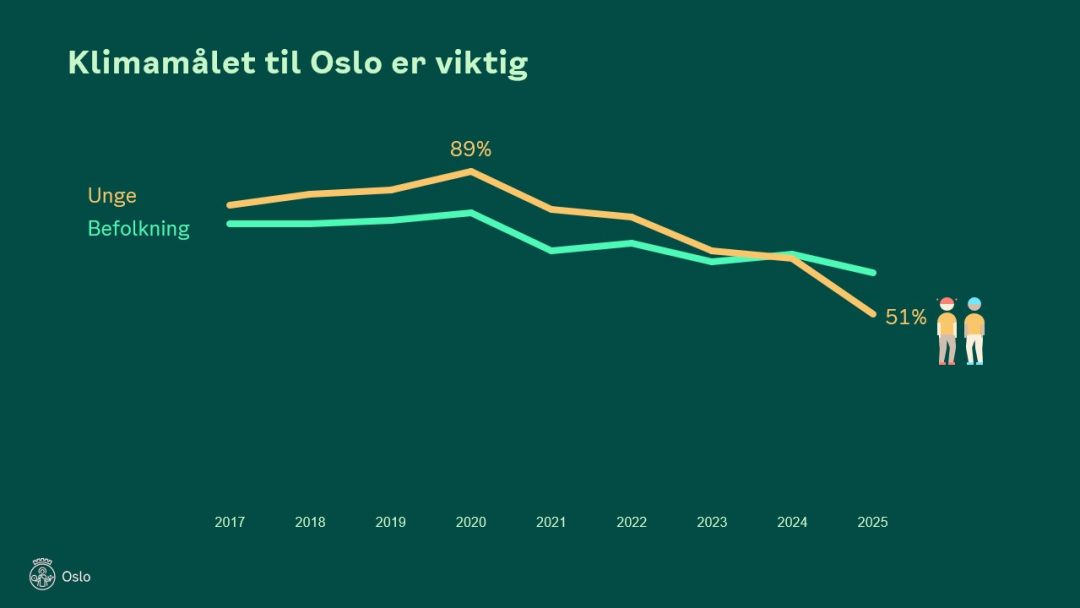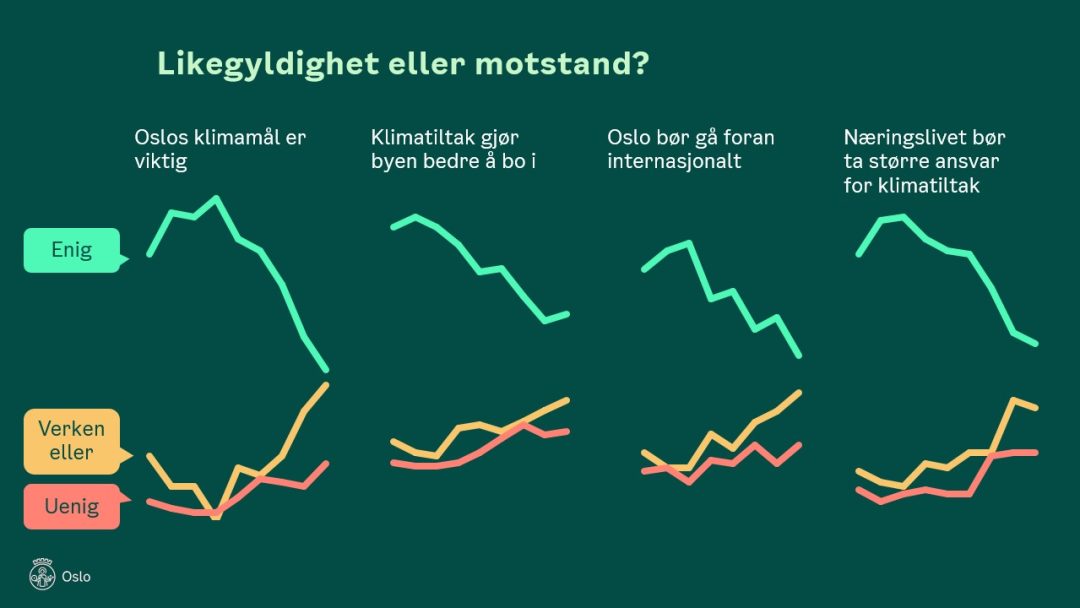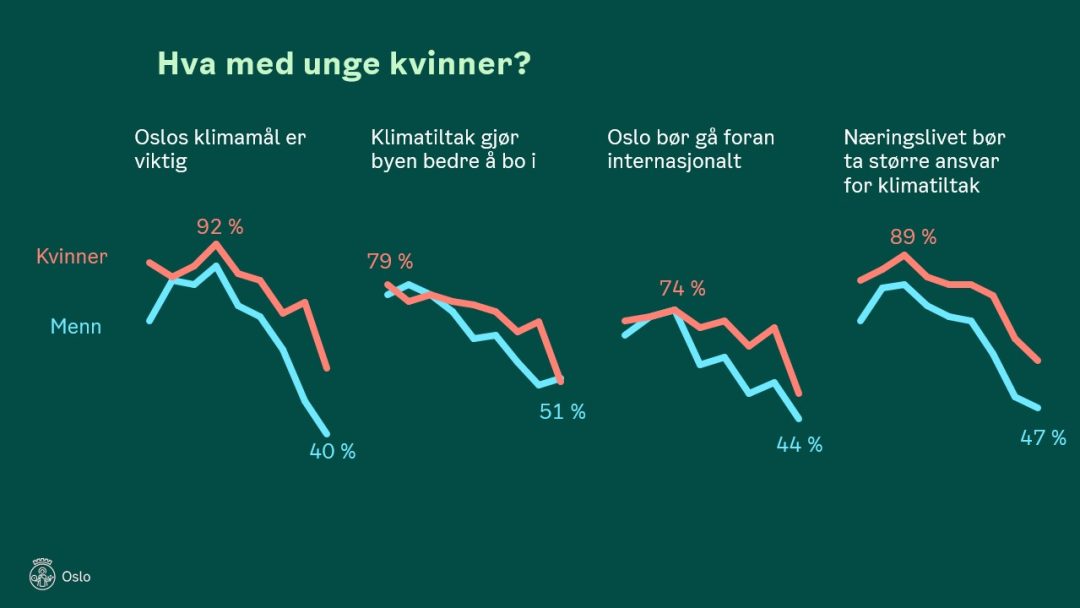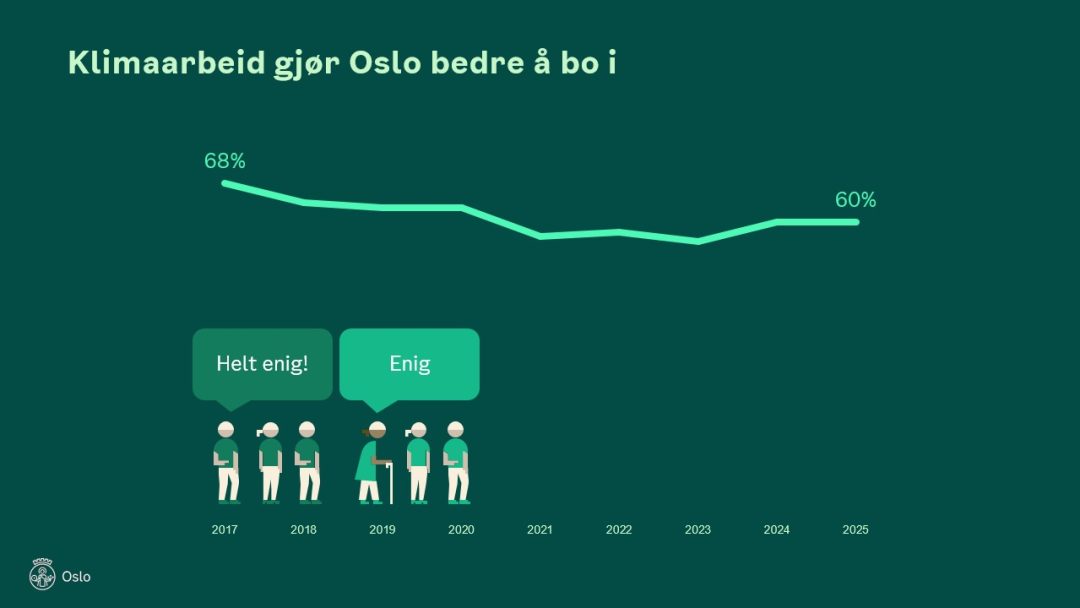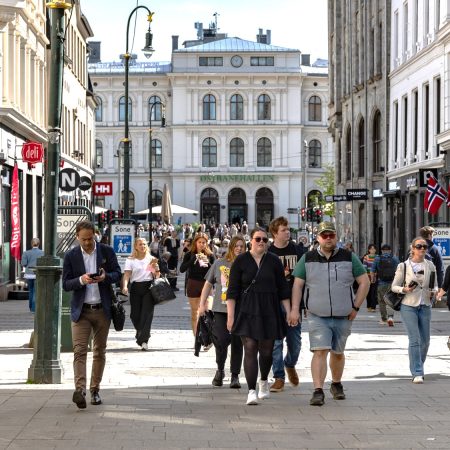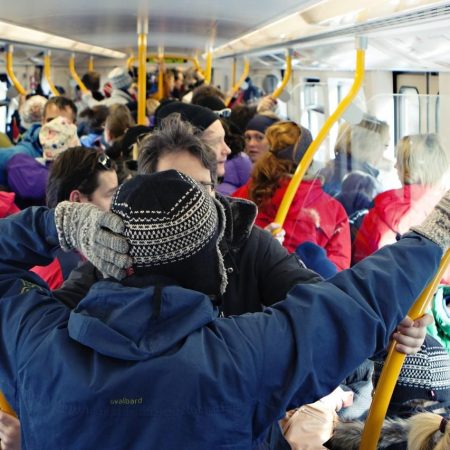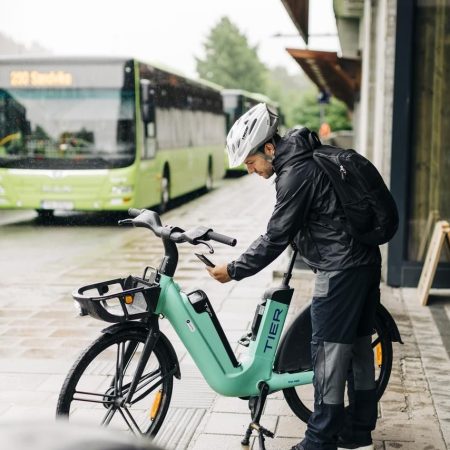Size: medium
Type: image
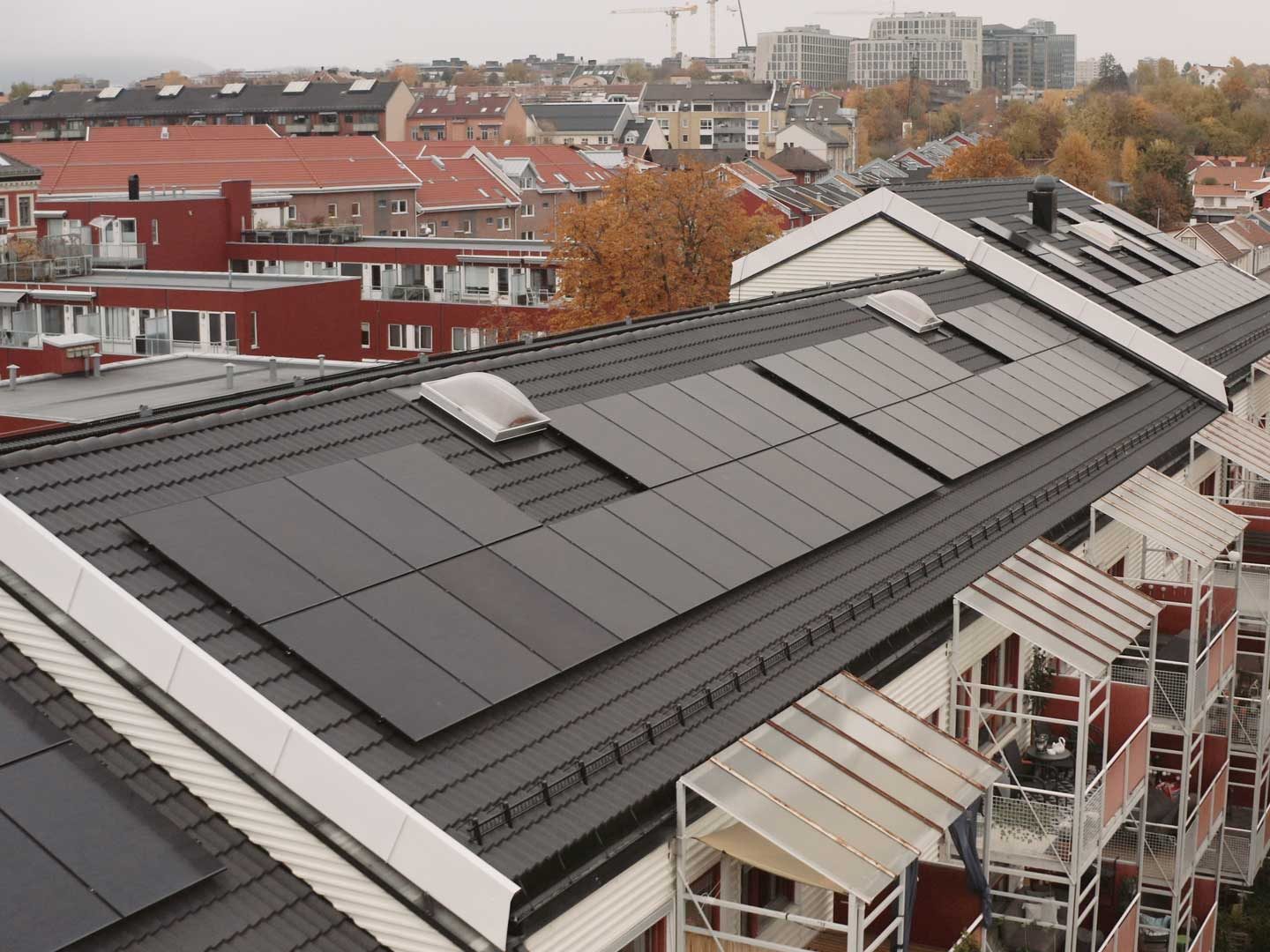
Klimaetatens faggrunnlag til veikart for utbygging av solenergi i Oslo
For å sikre at Oslo har nok energi til å nå klimamålene, må energiforbruket ned og kraftproduksjonen opp. Solenergi på byens bygninger er en del av løsningen.
Oppsummering
Oslo har et betydelig kraftunderskudd og et høyt strømforbruk, særlig om vinteren. For å nå klimamålene og sikre nok strøm til elektrifisering av bygg- og anleggsvirksomhet og transport, må byen både redusere energibehovet og øke den lokale energiproduksjonen.
Energieffektivisering og fleksibilitetsløsninger bør fortsatt være hovedstrategien, i tråd med UFF-rammeverket (unngå–flytt–forbedre). Samtidig peker solenergi seg ut som den mest realistiske formen for lokal strømproduksjon i Oslo. Solenergianlegg kan etableres på byens grå arealer, tak, fasader og parkeringsplasser og andre nedbygde flater, uten å legge press på naturen. Det tekniske potensialet er usikkert, men byen har gode forutsetninger for å ta i bruk allerede nedbygde arealer.
Klimaetaten anbefaler at Oslo kommune vedtar et mål om minst 400 MW installert solenergikapasitet innen 2040. Dette tilsvarer en årlig produksjon på rundt 0,3 TWh i 2040 og vil øke forsyningssikkerheten i Oslo, hovedsakelig i sommerhalvåret.
Et mål om minimum 400 MW i 2040 er ikke mer ambisiøst enn de nasjonale ambisjonene for solenergi (8 TWh i 2030). NVE har anslått at dagens virkemidler kan utløse 2 TWh solenergi innen 2030, og i det foreslåtte veikartet legges det opp til at utbyggingen i Oslo vil utgjøre omtrent 6 prosent av en nasjonal utbygging på 2 TWh. Det anbefales derfor også en evaluering av 2040-målet i 2030, der det åpnes for å heve målet på bakgrunn av blant annet teknologiutvikling og kommunens anledning til å stille krav om solenergi i plan- og byggesaksprosesser.
Likevel er mål om minimum 400 MW solenergi i 2040 krevende, og forutsetter:
- mer enn en dobling av dagens årlige utbyggingstakt fram mot 2040
- ambisiøse krav til etablering av solenergi i reguleringsplaner og tekniske forskrifter,
- økt kommunal støtte: minimum 40 millioner kroner årlig de neste årene. Dette innebærer at Klima- og energifondet må tilføres mer kapital, og at tilsagnsrammen bør økes
Et viktig hinder for å bygge ut solenergi i Oslo er nasjonale regler. De begrenser hva kommunen kan bestemme selv. For å øke etableringen av solenergi i tråd med det foreslåtte målet, er det avgjørende at kommunen får større frihet i plan- og byggesaker. Samtidig bør nasjonale regelverksendringer bidra til forenklinger og mer effektiv saksbehandling. Gode medvirkningsprosesser er viktig for aksept for solenergi i bybildet.
Solenergi styrker Oslos forsyningssikkerhet og energiberedskap, og kan suppleres med energilagringsløsninger som for eksempel sesonglagring av varme i fjell. Økt produksjon kan føre til at mer strøm mates inn på nettet. Dette kan påvirke den fysiske balansen i strømnettet, og dermed kostnader til tiltak. Disse kostnadene videreføres til nettleien. Samtidig kan økt lokal produksjon føre til økt grad av selvforsyning i en by med høyt og økende elektrisitetsbehov.
